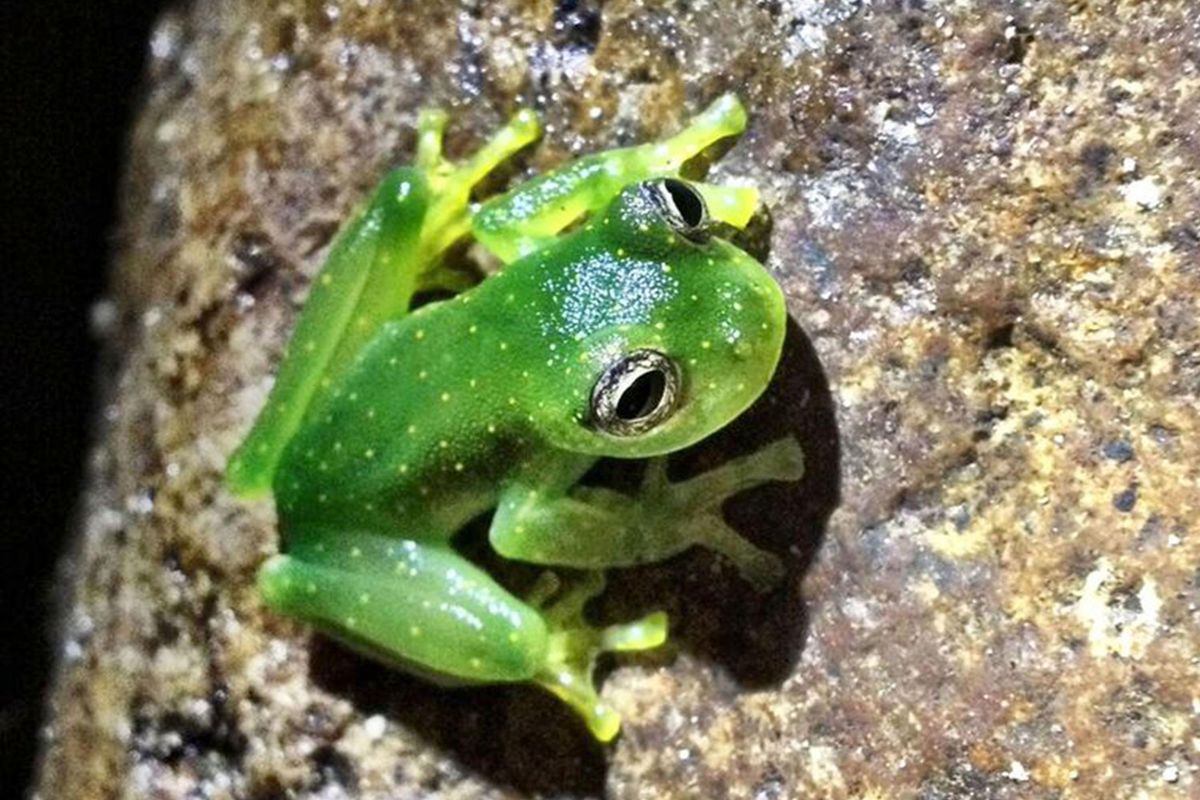This column reflects the opinion of the writer. Learn about the differences between a news story and an opinion column.
Shawn Vestal: WSU researcher’s work rescuing frogs from extinction earns him national ‘Golden Goose’ award

More than 20 years ago, Allan Pessier was a recently graduated veterinarian, studying veterinary pathology at the Smithsonian National Zoo in Washington, D.C.
His main project was trying to answer a seemingly limited question: Why were the zoo’s blue poison dart frogs dying off?
Pessier’s inquiry into a fungus on the frogs’ skin in 1996 helped lead scientists – working around the world at different universities – to an important answer to a much larger question: Why are so many of the planet’s amphibians dying off?
Their answer has helped scientists formulate a strategy for fighting an epidemic die-off of amphibians and preventing extinctions of frog species.
It also led Pessier back to Washington, D.C., this week, as part of a team of researchers collecting the Golden Goose Award, given to scientists who conduct research that may seem initially obscure or even silly – at least to those who complain about federal funding for basic research – but which has resulted in unforeseen concrete benefits.
Pessier is a WSU graduate who worked in veterinary pathology for 13 years at the San Diego Zoo, before returning to Pullman as a professor about a year ago, where he continues his work on frog pathology.
“I have a parade of dead frogs coming into my lab at all times,” he said this week in an interview from Washington, D.C., where he received the award from the American Association for the Advancement of Science and a bipartisan group of members of Congress.
The award was created in 2012 by business, university and scientific organizations, in response to criticisms of federal research spending as wasteful. Pessier received the award as part of a team including Joyce Longcore of the University of Maine.
The crisis of declining populations and extinctions among amphibians is acute, and pegged to a variety of causes from deforestation to climate change. An estimated 40 percent of amphibian species are said to be threatened with extinction. Pessier and others identified an obscure organism on frogs’ skin – known as chytrid fungi – was playing a major role in the die-offs.
It began with his study of the dying blue poison dart frogs at the Smithsonian, where he found skin fungi he couldn’t identify. He eventually made contact with Longcore, who cultured and began studying the fungi.
At the time, pessier thought he’d discovered something interesting, and he hoped to publish a paper. But about that time, he and his colleagues spotted a New York Times article about scientists in Australia and Central American who were studying frog deaths in rain forests. They had identified an organism as a potential cause, and the article included a microscopic photo of it.
“We recognized it right away,” Pessier said. “It’s very distinctive looking.”
The article noted that the Australian and Central American researchers would be meeting soon at the University of Illinois.
“So we kind of got ourselves invited to that meeting,” he said.
Eventually, the fungi was identified and named, and researchers began seeing it associated with amphibian deaths all around the world. The fungus thickens the skin and impedes absorption of water and other substances crucial to life. Since frogs actually “drink” through their skin, that creates life-threatening problems. In some frog species, the effect is dramatic enough to wipe out entire populations; other species aren’t so dramatically affected, and help pass along the fungi.
Chytrid fungi spread largely through human activities associated with frogs. The African Clawed Frog, for example, was exported around the world in the 1930s as a pregnancy test. That species is not severely affected by the fungi, but passes it along. The same thing happens with American bullfrogs, who are exported and farmed for food – frogs legs.
The discovery of the role of the chytrid fungi in frog disease has given researchers some strategies protect amphibians – in some cases by removing them from natural environments and keeping them in “survival assurance colonies” and planning strategies for reintroduction.
The Golden Goose award was formed in part to rebut a limited, and usually politically opportunistic, view of science, in which critics mock research that doesn’t have an immediate practical application.
“I’ve had more than one person in my career doing zoo animal pathology ask: ‘Why do you care that these frogs died?’ ” Pessier said.
He has a variety of answers. A wide range of chemicals on frog skin might have applications for human health. Frogs are important environment controls on insect population – which can have enormous consequences on human disease – and can signal larger environmental problems. Even without such justifications, he believes in the inherent value of understanding the world and what’s happening to its creatures, including the ones who aren’t human.
You ask the question, in other words, not because you know the answer – or how to quickly turn it into toothpaste – but because you don’t.
“You just never know,” he said.
